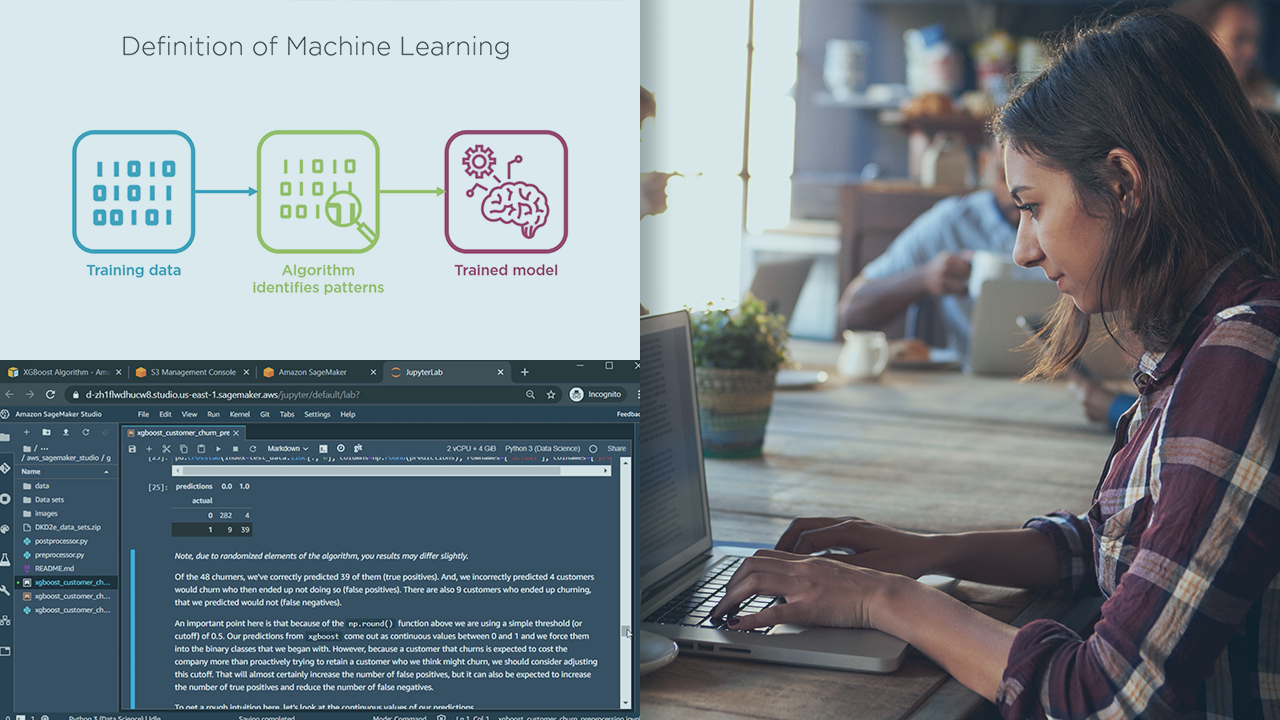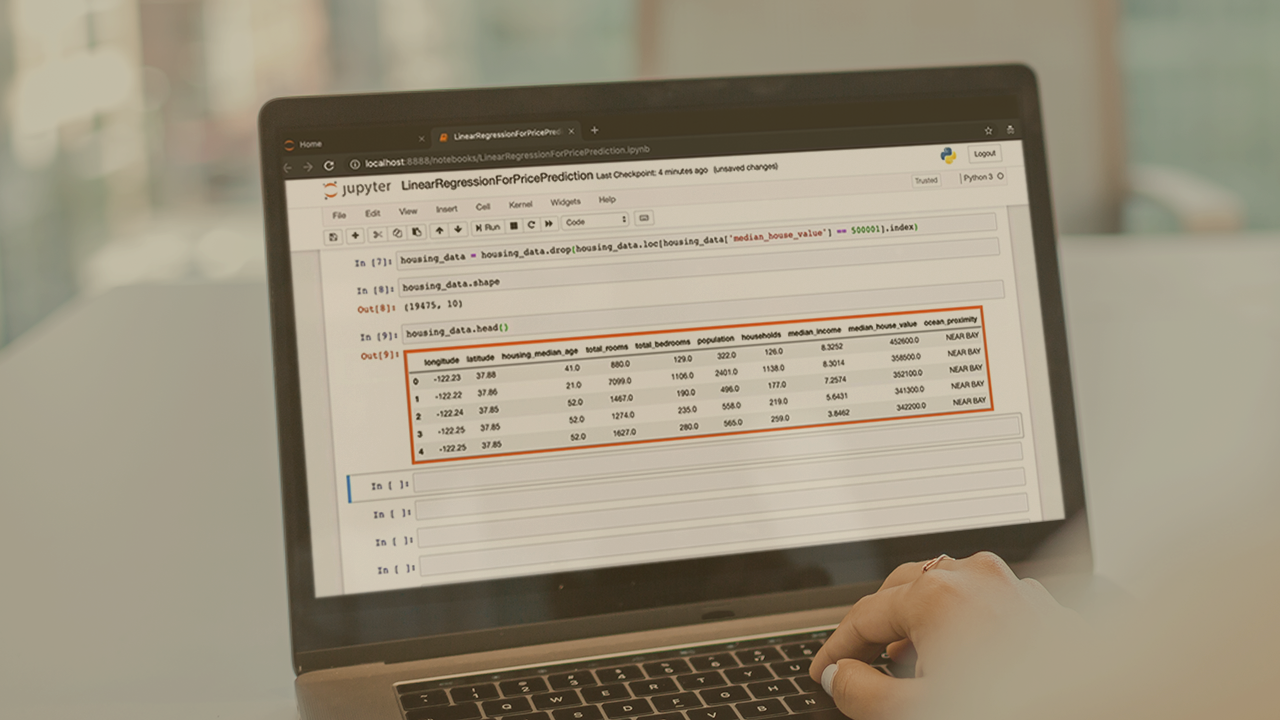Description
Learn advanced machine learning algorithms and techniques, as well as how to package and deploy your models in a production environment. Gain hands-on experience with Amazon SageMaker by deploying trained models to a web application and evaluating model performance. A/B test models and learn how to update them as you gather more data, which is a valuable skill in the industry.
Syllabus:
Course 1: Software Engineering Fundamentals
Software Engineering Practices
- Write clean, modular, and well-documented code
- Refactor code for efficiency
- Create unit tests to test programs
- Track actions and results of processes with logging
- Conduct and receive code reviews
Programming
- Understand when to use object-oriented programming
- Build and use classes
- Learn how large, modular Python packages and use object- oriented programming
Upload a Package to PyPI
- Portfolio Exercise: Build your own Python package.
Project: Build a Python Package
This program focuses on learning how to create machine learning algorithms and prepare them for scalable production systems. The first step toward building these systems is to learn how to write production-level code, which you can do by creating your own Python package.
Key Competencies Demonstrated:
- Object-oriented programming
- Code that is clean and modular
- Documentation of code
Course 2: Machine Learning in Production
Introduction to Deployment
- Gain familiarity with cloud and deployment terminology
- Understand the machine learning workflow in production
- Learn about workplace use cases of machine learning
Deploy a Model
- Deploy a model within SageMaker.
- Predict housing prices in Boston using XGBoost on SageMaker.
- Determine movie review sentiment using XGBoost on SageMaker.
Web Hosting
- Learn to provide access to an endpoint from a website
- Use API Gateway and Lambda to integrate ML models into a web app
Model Monitoring
- Learn how to monitor the behavior of your models over time.
- Tune hyperparameters of an XGBoost model using SageMaker’s automatic hyperparameter tuning tools.
- Run an A/B test on SageMaker to compare the tuned model to the untuned model.
Updating a Model
- Update your model to account for changes in the data that were discovered during model monitoring
- Explore how to handle new phrases introduced to your model during your sentiment analysis
Project: Deploy a Sentiment Analysis Model
In this project, you will be given a dataset containing data from an experiment. You will use statistical techniques to answer data-related questions and report your findings and recommendations in a report.
Key Competencies Demonstrated:
- Text examination
- SageMaker model deployment • Web deployment APIs
Course 3: Machine Learning Case Studies
Population Segmentation with SageMaker
- Learn the breadth of algorithms available using AWS SageMaker.
- Understand how you can use unsupervised algorithms to analyze data with SageMaker.
- Deploy an unsupervised model using SageMaker
- Draw insights about your data by extracting model attributes.
Detecting Credit Card Fraud
- Build and improve a linear model to identify cases of payment fraud.
- Handle cases of class imbalance in the training data.
- Tune a model in SageMaker to improve its performance according to a specific metric.
Deploying Custom Models
- Deploy a custom PyTorch model using SageMaker
- Write a custom training script to train a model of your own design.
Time-Series Forecasting
- Process time-series data and format it for training a machine learning model.
- Use SageMaker’s DeepAR algorithm for time-series forecasting
- Deploy a model and use it to predict future data points.
Project: Deploy a Sentiment Analysis Model
Utilize your machine learning abilities to compare two text sources and identify instances of plagiarism. In this project, you will extract relevant text features and train your own model to detect plagiarism. Then, using Amazon SageMaker, you will deploy your trained model.
Key Competencies Demonstrated:
- Feature engineering
- Model design and evaluation
- SageMaker model deployment
Course 4: Machine Learning Capstone
Elective 1: Starbucks
- Use purchasing habits to arrive at discount measures to obtain and retain customers.
- Identify groups of individuals that are most likely to be responsive to rebates
Elective 2: Arvato Financial Services
- Work through a real-world dataset and challenge provided by Arvato Financial Services, a Bertelsmann company.
- Top performers have a chance at an interview with Arvato or another Bertelsmann company!
Elective 3: Convolutional Neural Network
- Complete a project to identify dog breeds based on images.
Elective 4: Your Choice
- Build a new project entirely of your own choosing.
Project: Capstone Proposal and Project
You will use what you've learned throughout the programme to create a machine learning project of your choice for this capstone project. You will define the problem you wish to solve, investigate and explore the data, identify and explore the data, perform your analyses, and draw conclusions. You will present your findings and analysis in a blog post and GitHub repository. This project will serve as a showcase of your abilities as a machine learning engineer and will be an important component of your job-ready portfolio. • Completed the entire machine learning workflow, from data exploration to model training and evaluation.









